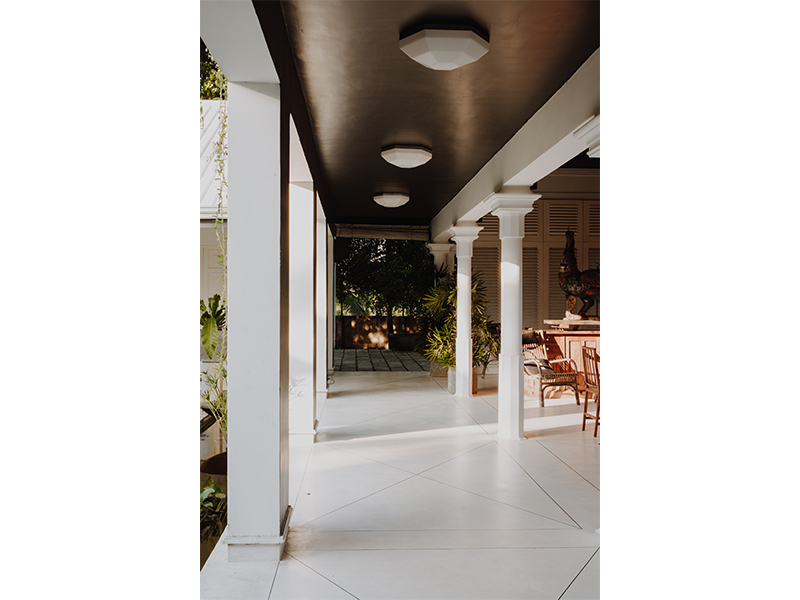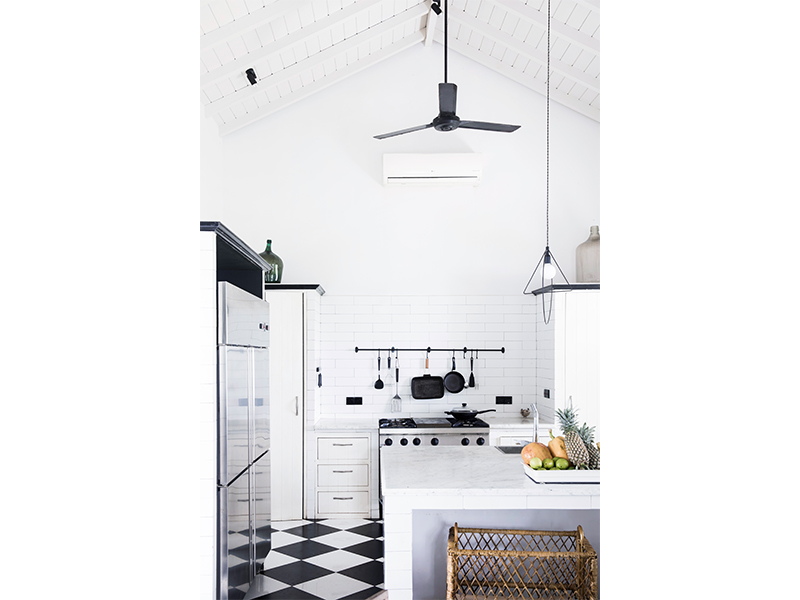When two couples based in Singapore came across Halala Kanda, a ruined and abandoned villa in Sri Lanka, they could see the potential for something special. We hear from RICHARD BLEASDALE about their efforts to restore the property to a piece of paradise.
About Halala Kanda’s owners
Jenny Lewis & Richard Bleasdale
From: New Zealand and the UK
Years in Singapore: 18
Day jobs: Owner of Bode Fabrics & Furnishings (Jenny); marketing management advisor with Ebiquity (Richard)
Dean Sharpe & Bentley de Beyer
From: New Zealand and Australia
Years in Singapore: 8 years in two stages; now in New York
Day jobs: Design and Banking
 How did you find villa Halala Kanda?
How did you find villa Halala Kanda?
Our co-owners Dean and Ben had a couple of years previously bought a small colonial bungalow in Sri Lanka and fallen in love with the country and the people. They were touring the southern coast and happened to discover the old Halala Kanda plantation estate almost by luck while looking at local properties on the internet.
Where is it in Sri Lanka and what’s around it?
Halala Kanda translates as “Firefly Hill”; it sits up high near a village called Welipitiya, about 5km inland from the gorgeous southern coast surf beach, Weligama Bay. The property is surrounded by rice paddy fields, small domestic tea growers and a variety of beautiful little villages and natural vegetation. Tell us a bit about the history of the house. A wealthy Sri Lankan family from Kandy built the plantation property and house in 1912. Their goal was to find a beautiful wife for their son, as the South was known to have some of the country’s most beautiful brides.
The estate passed through the hands of several well-known Sri Lankan families during the following decades and in the 1960s hosted both the touring Australian cricket team and Emperor Haile Selassie from Ethiopia – as was discovered during the restoration of the house with the finding of old photographs and a personalised visiting card!
What condition was it in when you came across it?
The whole property was completely overgrown with jungle; the house itself had jungle growing completely throughout it and was close to falling down. Apparently, it hadn’t been lived in since the 1980s when the then wealthy owner died while piloting his own plane in a crash off the Malaysian coast. The ruined house became home to a huge colony of fruit bats who would launch out at sunset in search of food. Despite this, the unique charm and ambience of the property was still maintained; we all instantly fell in love with it.
What was the purchase process like – any particular challenges?
A local family now owned the five-acre property and it was being sold in two lots – the house parcel and the surrounding land. We had to establish and agree with them a new parcel containing the house and a reasonable amount of surrounding land; we eventually agreed to 2.5 acres. At the time, it was possible for foreigners to buy at a majority or outright level in Sri Lanka. This made things easier. The whole process took approximately three months to complete – not too bad.

Where did you start with the redesign and restoration?
Our key initial decision was to try to save the house and restore it to its former glory. We later learnt that this decision was appreciated by our neighbours, who were very concerned the historical old house would just be knocked down.
Our vision was to maintain the history and authenticity of the property, but infuse it with a fresh contemporary flair in keeping with the beautiful and natural landscape. To bring this vision to life, we worked with a wonderful architect friend, Ross Logie, who turned our conceptual ideas and thoughts into designs and drawings.
Any memorable moments in the restoration process?
One of the most impressive aspects of the process was that all the concrete, plaster and timber work was done from scratch on-site. The local family building contractor we worked with employed an amazing array of craftsmen to complete each stage. For example, the 22-metre swimming pool was an all-hands-on-deck moment, with two portable concrete machines and a group of 20-plus workers going around the clock for several days so that everything bonded and sealed perfectly.
What was kept from the original building and what was added?
We were very conscious about retaining the magic of the house; so we deliberately focused on keeping all the architectural details and fretwork, for example. When we originally cleared the jungle and undergrowth around the house, we discovered a tree growing in the beautiful entrance portico and up to the house’s original crest. Our team did an amazing job of re-crafting this 100-year-old portico and the special founding crest, which shows its original build date in the Sinhalese calendar.
What are your hopes and aspirations for Halala Kanda?
To be a haven for family and guests alike to enjoy discreet luxury with Sri Lankan warmth and hospitality.
Highlights of the new-look villa
The Suites
- Two verandah suites with private access to the main gardens
- Two luxury suites with private walled gardens
- Two double suites opening out onto lounge areas on the front terrace. The six suites are open and airy, with high ceilings, wide-opening French doors, and both fans and air-conditioning. Four have their own private bathing rooms and dressing areas.
The Rest
- The palatial hallway lounge has towering 20m-high barrel-vault ceilings and a collection of Sri Lankan antique and contemporary artworks.
- Off from this lounge is the Room of Curiosities; this is an eclectic place to curl up with a favourite book or enjoy drinks and a hand of cards.
- There are plenty of options for a quiet escape on the antique chaises dotted around the internal courtyard verandah.
- The owners have a deep love of all things food and drink, so Halala Kanda provides a true culinary experience too. Guests can even experience cooking some of Sri Lanka’s most inspiring dishes with in-house chef Lasitha.
- The Dining Pavilion bordering the internal courtyard has an epic stone dining table; it comfortably seats 20 guests in an alfresco environment.
- Two acres of gardens surround the property; original plantings of coconut, cashew, ebony, mango and more have been supplemented with tea and coffee rows, pineapple groves, cinnamon vines, citrus trees and a spice and vegetable garden.
- There’s a 23m saltwater pool to work off the calories or just de-stress, with a view stretching across the jungle and paddy fields to the coast.
- Book-ending the pool is The Folly; this luxuriously appointed Art Deco-style conversation pit is ideal for early evening drinks as the sun sets.
What guests say
- “Halala Kanda was an amazing place to stay not only in Sri Lanka but in general. The staff were all so hospitable and really took care of us. The house is perfect for groups travelling together or families wanting to explore the south coast of Sri Lanka; it’s super easy getting around with tuk-tuks or motorbikes and a great way to actually see what’s going on. There’s also so much to see in the house and different parts to explore with all the art and various sitting areas. Truly magical.”
- “Fabulous – a beautiful taste of Sri Lanka.”
- “What an amazing place. Gorgeous architecture and décor, serene and like a piece of history; plus, amazing food, and friendly and helpful staff. We would definitely go again, hopefully for a longer stay.”
- “We’re spending our final day in Sri Lanka in the lap of luxury, courtesy of Bentley, Dean, Jenny and Richard.”
Find out more at halalakanda.com.
This article first appeared in the November 2021 edition of Expat Living. You can purchase the latest issue or subscribe, so you never miss a copy!
For more renovation stories and articles on furniture, go to our section on homes; or dream a little bit on our travel pages!












